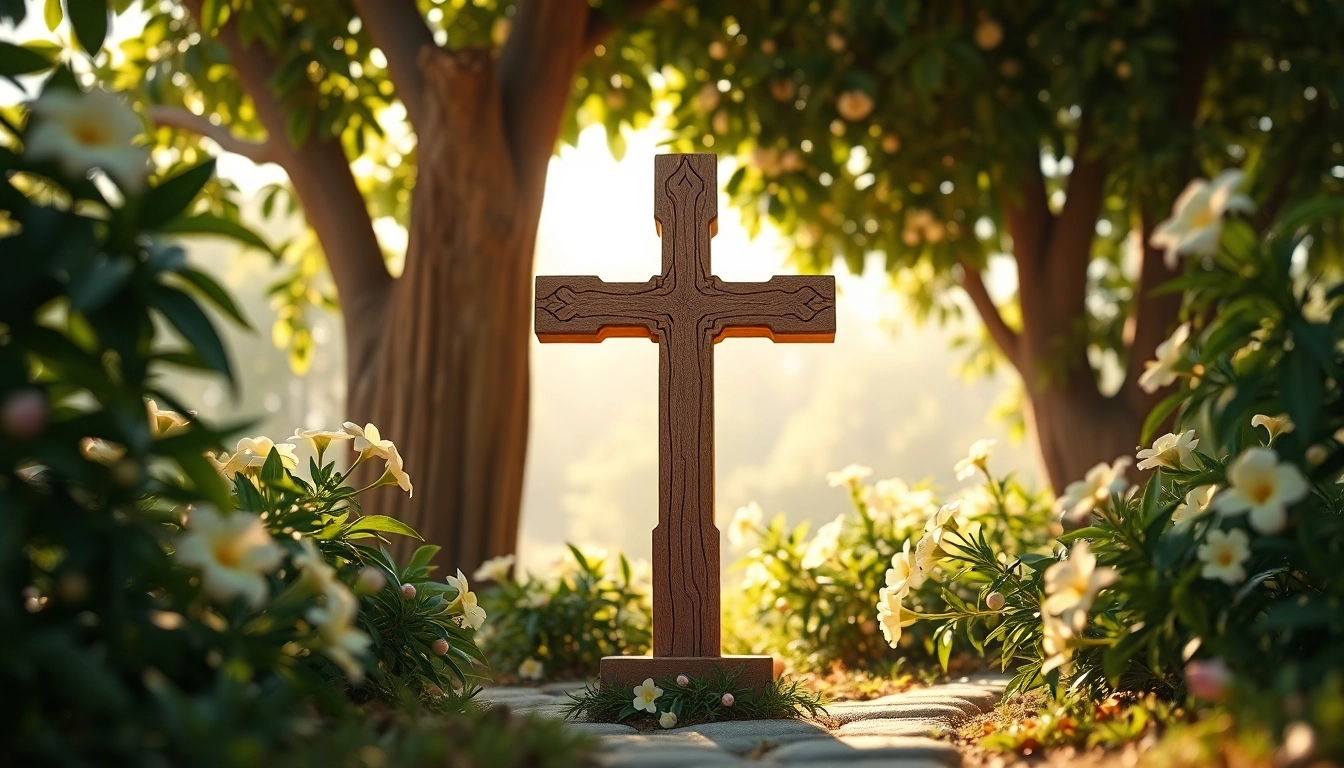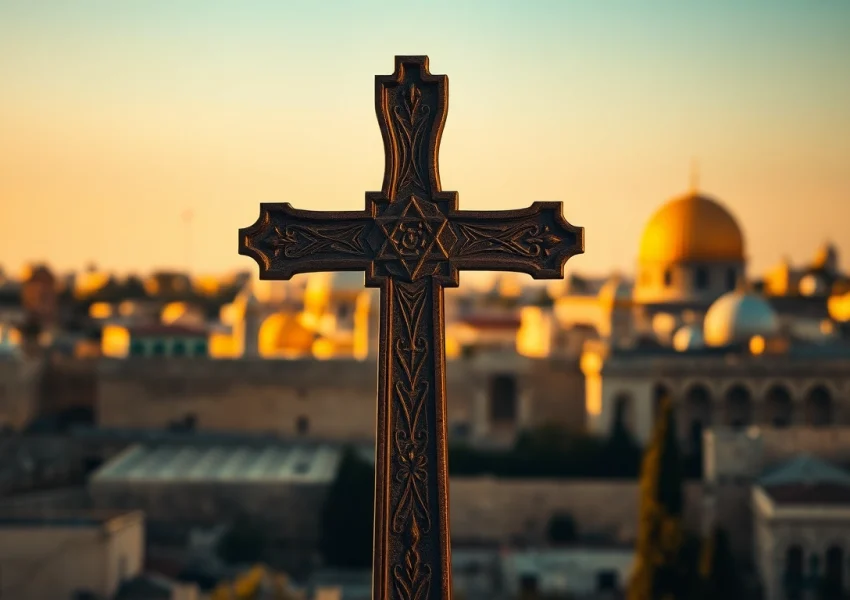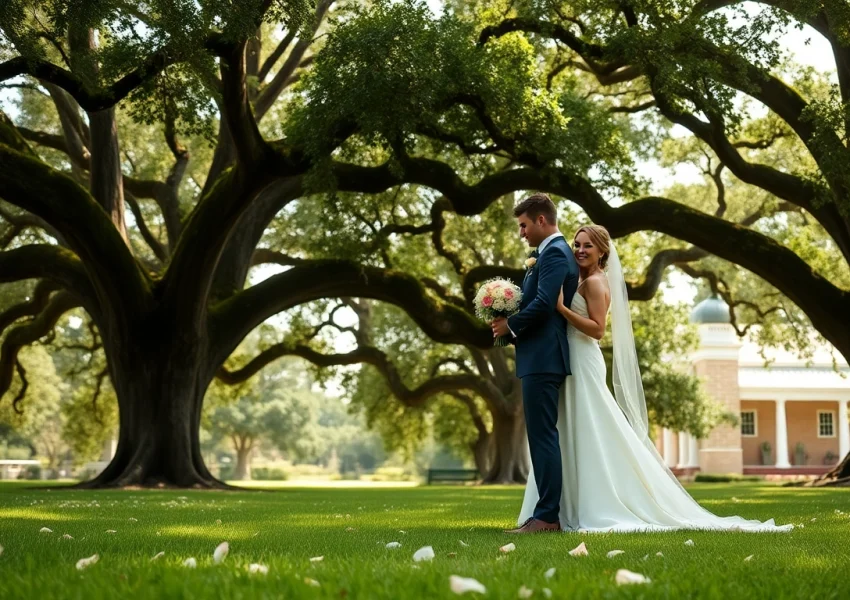Introduction to Jerusalem Crosses
The Jerusalem crosses represent an intersection of deep symbolism, artistic expression, and historical significance within the Christian faith. Known for their distinctive design and rich heritage, they serve as powerful symbols of faith for many believers. These crosses, particularly recognized for their unique structure featuring a large central cross with smaller crosses in each quadrant, embody both spiritual and cultural narratives deeply rooted in the history of Christianity and Jerusalem itself.
What are Jerusalem Crosses?
Jerusalem crosses, also referred to as the “five-fold cross” or “cross-and-crosslets,” are a type of heraldic cross that has become iconic within Christian iconography. The main design consists of a large central cross potent that symbolizes Christ, surrounded by four smaller Greek crosses positioned in the four corners. Each of these smaller crosses is said to represent various elements of the Christian faith, including the Four Evangelists: Matthew, Mark, Luke, and John. The Jerusalem cross is not only a representation of the crucifixion of Jesus but also a symbol of His resurrection and the spread of Christianity across the world.
The Symbolism Behind the Jerusalem Crosses
The Jerusalem cross bears a multitude of meanings, each layer contributing to its significance as a spiritual emblem. The central cross signifies Christ’s sacrifice, while the four smaller crosses represent His followers’ duty to spread His message to the corners of the earth. This association underlines a powerful evangelical mandate, showing how early Christianity was tasked with spreading teachings across geographical and cultural boundaries. Each small cross can also represent the four cardinal points—North, South, East, and West—symbolizing the universality of the Christian message.
Historical Context of Jerusalem Crosses
The origins of the Jerusalem cross can be traced back to the early medieval period, specifically during the time of the Crusades in the 11th century. It emerged as a prominent symbol of the Kingdom of Jerusalem established by the Crusaders. The cross became an emblem of the Christian presence in the Holy Land, encompassing both a marker of protection for its bearers and a rallying symbol for the crusaders. Over time, it developed associations with pilgrimage, particularly to Jerusalem, where the cross served as a reminder of the Holy City’s significance for Christians worldwide.
The Design and Features of Jerusalem Crosses
Unique Characteristics of Jerusalem Crosses
Jerusalem crosses are distinct in their design, characterized by the prominent central cross and the four surrounding smaller ones. The large cross, typically a cross potent, features expanded ends emphasizes strength and resilience, while the surrounding smaller crosses often have delicate detailing, which enhances their visual appeal. This aesthetic contrast reflects the duality of strength through faith and the delicate nature of human belief. The size and materials used can vary, making these crosses customizable for various purposes, including jewelry, wall art, and devotional items.
Materials Used in Crafting Jerusalem Crosses
Jerusalem crosses can be crafted from various materials, including wood, metal, and stone, often reflecting the spiritual and cultural heritage of the region. Olive wood is particularly favored for its connection to the Holy Land, offering a tangible link to biblical narratives. The craftsmanship involved often incorporates intricate carvings that may depict biblical scenes or symbols, enhancing the personal and spiritual significance of the piece. Other materials, such as silver or gold, are often used in jewelry designs, symbolizing purity and the divine.
Common Variations of Jerusalem Cross Designs
While the classic design of the Jerusalem cross remains prevalent, artisans have created numerous variations to meet the diverse tastes of believers. Some popular adaptations include:
- Jewelry: Jerusalem crosses are often worn as pendants or charms, combining personal faith with everyday fashion.
- Wall crosses: Larger versions designed for display in homes or places of worship, often made from olive wood or decorative metals.
- Shrine versions: Elaborately designed crosses that serve not only as symbols of faith but also as focal points in devotional spaces.
Significance of Jerusalem Crosses in Christianity
The Evangelical Meaning of Jerusalem Crosses
The Jerusalem cross carries evangelical significance beyond its physical manifestation. It serves as a powerful reminder of the Christian mission to spread the gospel. The combination of the crosses signifies how Christ’s message transcends geographical and cultural barriers, emphasizing a call for all believers to share the word of God. This deeper meaning has inspired countless missionary efforts throughout history, fostering engagement between different cultures and communities across the globe.
Use in Christian Rituals and Practices
In Christian rituals, the Jerusalem cross holds a prominent place. It is often included in liturgical settings, used in baptisms, confirmations, and other ceremonies to signify spiritual rebirth. The cross may also feature in religious art, serving as a backdrop or focal point in sacred spaces. Its presence in worship settings cultivates a spirit of unity and reverence among congregants, aligning them with a historical tradition that speaks to the heart of Christian faith.
Jerusalem Cross as a Symbol of Faith
The Jerusalem cross stands as a powerful symbol of faith for Christians worldwide. It encapsulates the core tenets of Christianity, from the sacrifice of Jesus to the mission of the church. Many Christians wear or display the cross as a personal emblem of their faith, reflecting their connection to the broader Christian community. This emblem serves as a source of encouragement, reminding believers of their purpose and the triumph of love over adversity, a central theme of the Christian narrative.
How to Choose and Care for Jerusalem Crosses
Tips for Selecting Authentic Jerusalem Crosses
When choosing a Jerusalem cross, authenticity is key. Here are some tips for selecting genuine pieces:
- Source: Purchase from reputable shops, preferably those based in or associated with Jerusalem or the Holy Land.
- Material: Look for quality materials, such as authentic olive wood or valuable metals, which signify genuineness.
- Craftsmanship: Examine the erosion of the craftsmanship—beyond mass-produced items, authentic pieces often have intricate details and unique handmade characteristics.
Maintaining the Quality of Jerusalem Crosses
To ensure the longevity of your Jerusalem cross, various maintenance practices can be employed:
- Wood Crosses: Keep wooden crosses away from direct sunlight and moisture, and periodically apply a wood conditioner to preserve their quality.
- Metal Crosses: Clean with a soft cloth and appropriate cleaner; store them in an acid-free environment to prevent tarnishing.
- Jewelry: Regularly check settings and clasps to ensure they’re secure, and clean jewelry with non-abrasive solutions.
Displaying Jerusalem Crosses in Your Home
Displaying a Jerusalem cross can enhance spiritual ambiance in your home. Consider these approaches:
- Focal Points: Place larger crosses in central locations like living rooms or entryways to evoke conversation and reflection.
- Altar Spaces: Create a personalized altar or sacred space that features your cross along with candles, bibles, or other spiritual artifacts.
- Artistic Displays: Frame smaller Jerusalem crosses and hang them as wall art, paired with inspirational quotes or biblical verses.
Conclusion: Embracing the Legacy of Jerusalem Crosses
Continuing the Tradition of Jerusalem Crosses
As time progresses, the Jerusalem cross remains a significant emblem for many Christians, continuing a legacy that intertwines deeply with faith and culture. It embodies a tangible link to history—a bridge connecting believers to the spiritual journeys of those who came before them. Preserving this tradition involves both honoring its historical roots and adapting its meanings to contemporary faith expression.
Impact of Jerusalem Crosses on Contemporary Christian Life
In contemporary Christian life, the Jerusalem cross serves multi-faceted roles, from a personal talisman of faith to a powerful symbol of cultural identity. As Christians navigate modern challenges, this cross offers a constant reminder of their inherent responsibilities to uphold their faith and spread love, compassion, and understanding through their actions. Its significance extends into various dimensions of life—a personal symbol, a heritage marker, and a calling for action.
Learning More About Jerusalem Crosses
For those eager to deepen their understanding of the Jerusalem cross, numerous resources exist, from scholarly texts exploring its history to artisan workshops in the Holy Land teaching about its craftsmanship. Engaging with community groups or churches that celebrate this symbol can further enrich one’s appreciation of its meanings. Books, documentaries, and exhibitions like those at the Jerusalem Art Museum provide valuable insights into how this emblem continues to resonate with believers around the world.






